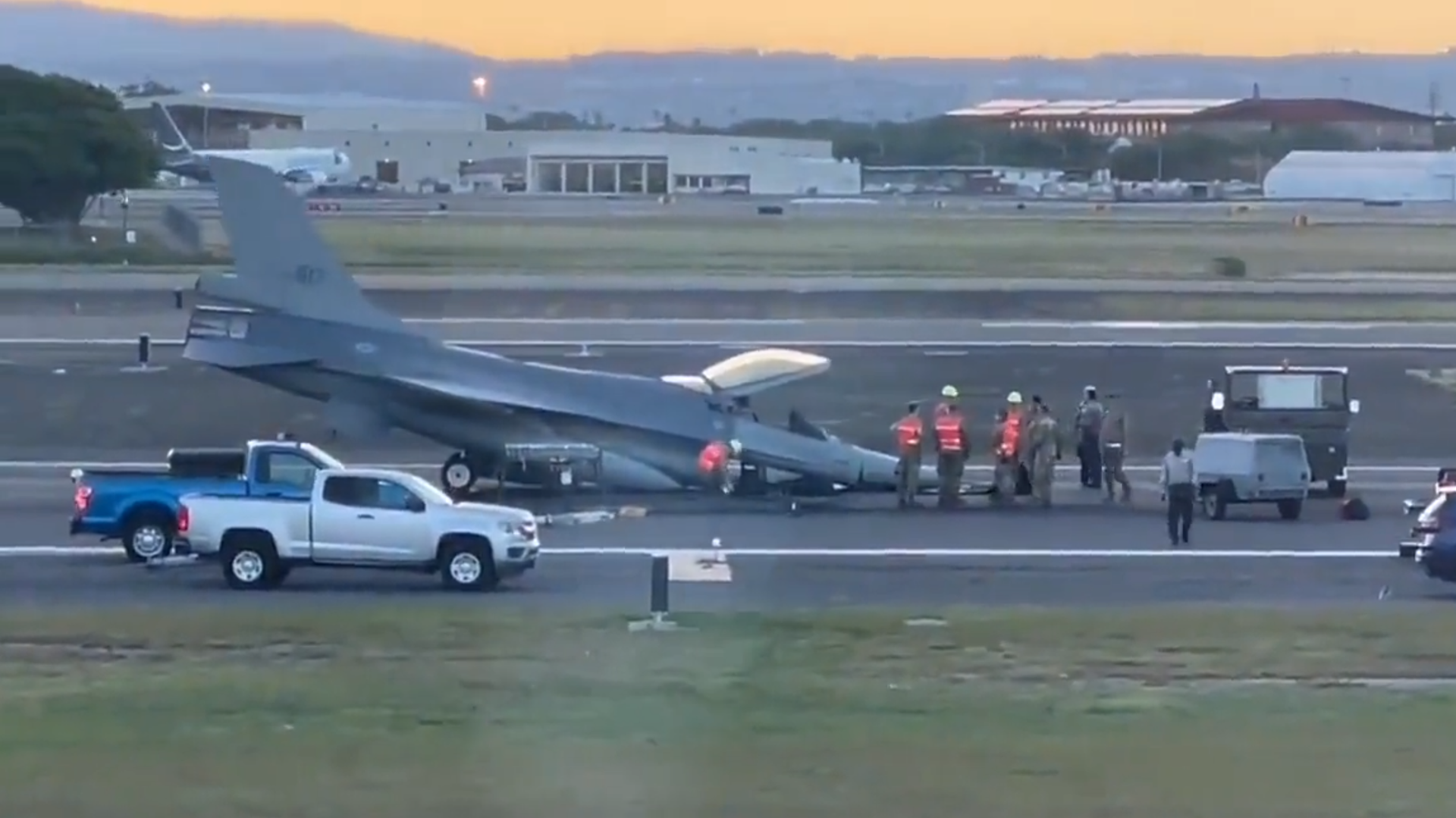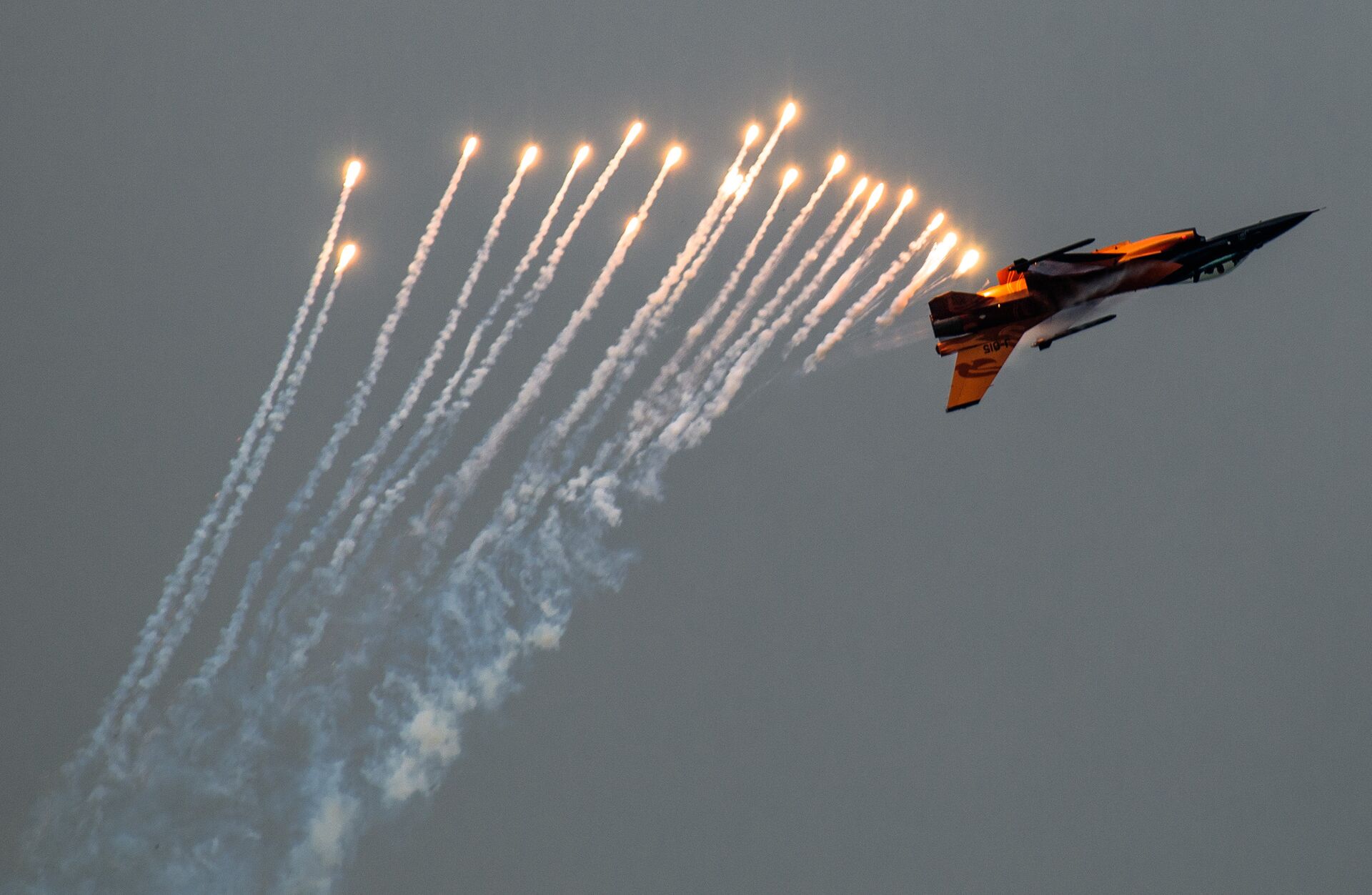Photo: Taiwanese F-16 Fighter Crash-Lands at Hawaii Airport in Ninth Crash in 2 Years
18:22 GMT 07.06.2022 (Updated: 12:43 GMT 19.06.2023)
Subscribe
A Taiwanese F-16 fighter jet returning to the autonomous island from training in the United States crash-landed at a Hawaii airport on Monday. It was just the latest such incident to plague the self-styled Republic of China Air Force.
The Taiwanese government has made no official comment as of yet, but a source in the Defense Ministry told Taiwan’s Central News Agency that an F-16A fighter had suffered a landing gear malfunction while returning from training in Arizona and requested to land in Hawaii.
Local Hawaiian news outlets quickly circulated footage of the aircraft, which made a “hard landing” at Daniel K. Inouye International Airport in the state capital of Honolulu. Photos show its nose gear collapsed, and the aircraft’s nose and engine air intake duct resting on the tarmac.
Taiwan Air Force F-16A makes emergency landing at Honolulu Airport in Hawaii due to a nose gear failure on its way from Arizona to Taiwan. No injuries reported. https://t.co/TA4NIdush1 pic.twitter.com/bLrHcyfBn6
— Breaking Aviation News & Videos (@aviationbrk) June 7, 2022
#BREAKING
— AM Raad (@AMRAADfdg) June 7, 2022
Taiwanese F-16 #fighterjet Crash lands in Honolulu, #Hawaii
No injuries reported so far...#AirForce #EXCLUSIVE pic.twitter.com/XYb5sRrkrd
Hawaiian military officials were similarly shy about the details, but the Honolulu Star-Advertiser was able to reasonably confirm that it wasn’t a US aircraft. The Hawaii Department of Transportation told the paper the crash would cause some minor issues for travelers.
“With the distance that the planes have to travel to get back to the gates, it could cause some delays,” HDOT spokesperson Jai Cunningham told the paper. “Nothing major, but it could cause a little bit of delays because it’s a pretty good drive to get back from out there.”
A military source told CNA the jet was one of 10 F-16A/Bs currently deployed to Luke Air Force Base in Phoenix, Arizona, for a training mission. The jets come from the earliest model of F-16, which the US agreed to sell to Taiwan in the 1990s after the Pentagon adopted a more updated model. Now, the US is helping Taipei to retrofit all 141 of its F-16A/B fighters into equivalents of the F-16V “Viper,” the latest model of the jet that sports advanced avionics, including a new radar, and electronic warfare systems.
The US formally ended relations with Taiwan in 1979 when it switched recognition of the Chinese government from the ROC in Taipei to the People’s Republic of China (PRC) in Beijing; however, it has continued to funnel support to Taipei ever since, in order to stop the autonomous island from reuniting with the Chinese mainland and becoming a part of the PRC. Their relationship has grown closer in recent years as Washington has shifted toward seeing China as its primary adversary, accusing Beijing of seeking to upend the “rules-based international order” by surreptitious means.
Taiwan has also regularly roused its fighter jets in response to what it claims are incursions of its air defense identification zone by Chinese aircraft. The zone, which has no basis in international law, extends across a large stretch of sea and even the Chinese mainland, and Chinese flights through it are often incorrectly reported in the Western press as violations of Taiwanese airspace. The escort missions have clearly taken their toll, as Taiwanese military aircraft have crashed with increasing frequency over the last three years.
Since 2020, Taiwan has been forced at various times to ground all of its F-5E Tiger II fighters, AT-3 trainer aircraft, F-16V Vipers and Dassault Mirage 2000 strike aircraft due to crashes.




